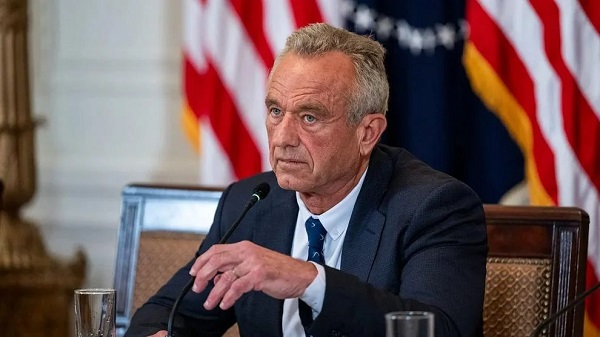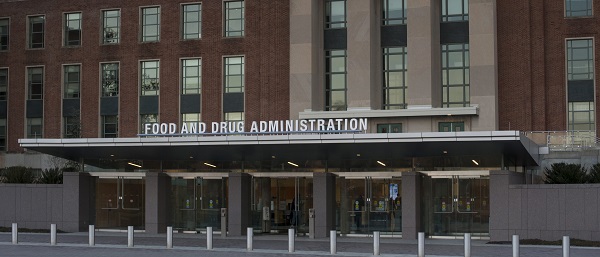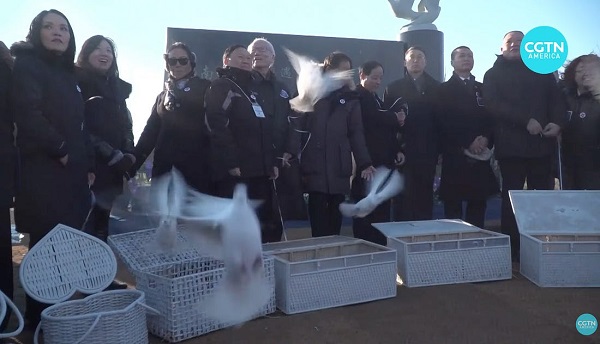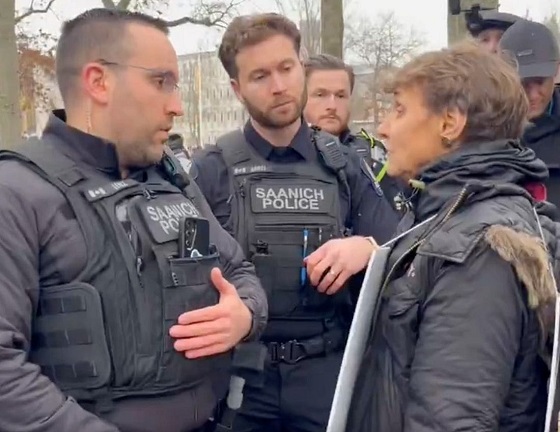Crime
Nashville school shooter’s ‘manifesto’ highlights the destructive nature of porn, sexual confusion

From LifeSiteNews
The disjointed ramblings of gender-confused school shooter Audrey Hale reveal her deep obsession with gender and race, with many disturbing entries centering on aggressive and sexual behaviours.
On June 10 and June 14, I reported on leaked sections of the so-called “manifesto” of Audrey Hale, the trans-identified school shooter who killed three 9-year-old children and three adults at Covenant Christian School on March 27, 2023, in Nashville, Tennessee. LGBT groups had called for the suppression of Hale’s writings immediately after the murders for fear that (another) transgender shooter would have some politically inconvenient things to say. The press and the police largely cooperated, with the exception of several leaks earlier this year.
Those leaks included photos of Hale’s journals, in which she wrote of her hatred for her Christian parents, her desire for puberty blockers, and her fervent hope for a “high death count” when she started shooting those “white privileged crackers.” In the second leak, including pages published by Matt Walsh of The Daily Wire, Hale fantasized about having a male body and sodomizing girls, and attacked Christians as transphobic bigots. Some phrases and numbers were difficult to decipher or decode.
READ: Full 90 pages of Nashville shooter’s ‘manifesto’ reveal obsession with gender confusion, suicide
Now, The Tennessee Star has published the full, unredacted “manifesto” of Audrey Hale (who refers to herself throughout the notebook as “Aiden,” her transgender identity). It is about 90 pages and is not so much a “manifesto” as a series of disjointed ramblings, much of it sounding like it was written by someone tormented by unrequited love; most of it is sexual and obsessive. Combine that with Hale’s gender dysphoria and this Christian school girl turned transgender terrorist was clearly a deeply disturbed and angry person.
I spent some time reading through all of Hale’s writing and found much of it incoherent. At one point, she writes, “This love will never end until I am up in heaven where hurt is no more and I can love you and be in no more pain,” appearing to refer to a breakup. Shortly thereafter: “Everything hurts.” The name “Syd” shows up frequently; these letters are apparently to or about Hale’s friend Sydney Sims, who died in a car accident in 2022. Hale was clearly infatuated by her. Comments referring to her transgender identity are throughout the notebook:
“I am a boy with a vagina.”
“Audrey is not my name.”
“A terrible feeling to know I am nothing of the gender I was born of.”
“I am the most unhappy boy alive.”
“I will be of no use of love for any girl if I don’t have what they need: Boy’s body/male gender.”
“If God won’t give me a boy body in Heaven,” followed by a blasphemous declaration.
“Why does my brain not work? Because I was born wrong!”
“I hate society b/c society ignores to see me. I’m a queer; I am meant to die.”
She had apparently been planning her school shooting for some time. On January 16, 2023, she wrote, “I’m so sorry Nikki. I didn’t mean to plan my massacre on the 17th. I’m going to be a terrible s**t for leaving you. How bad my heart hurts. Tomorrow is my last day on earth. I love you. I am so sorry. Audrey (Aiden).” Underneath, she scribbled: “Ps—Not leaving yet. I couldn’t do it. I don’t want to ruin your day. I’ll wait as planned.”
Two pages later: “Paige, I’m going to kill people someday. Please don’t be mad … I’m going to do something bad. It’s too sad to think what you might feel. I’m so sorry. I love you. I just have to die. I think God will enter me in heaven. If I do get there I’ll be waiting for you. Aiden.”
Paige Patton was one of Hale’s friends. Hale messaged her the day of the shooting saying that she would die that day; Patton alerted the authorities, but they didn’t respond to her until after the shooting.
“So now, in America, it makes one a criminal to have a gun or be transgender or non-binary,” Hale wrote on another page. On the opposite page, a chilling note: “Covenant was closed yesterday. I guess it was b/c of the weather … 2/18/23.” Several pages later: “In less than 26 days, my final day, Death Day, will finally await me. 3/27/23.” On March 13, after packing several pages with grotesque, clearly porn-inspired sexual fantasies: “I’m sorry innocent lives will be taken.” In a reference to the Columbine shooters: “I want my massacre to end in a way that Eric (Harris) + Dylan (Klebold) would be proud of.”
The final page was written on the day of the massacre. “Forgive me God, this act will be inglorious,” she wrote.
Death Day! Today is the day. The day has finally come! I can’t believe it’s here. Don’t know how I was able to get this far, but here I am. I’m a little nervous, but excited too. Been excited for two weeks. There were several times I could have been caught, especially back in the summer of 2021. None of that matters now. I’m almost an hour and 7 minutes away. Can’t believe I’m doing this, but I’m ready … I hope my victims aren’t. My only fear is if anything goes wrong … God let my wrath take over my anxiety. It might be 10 minutes tops. It might be 3-7. It’s gunna go quick. I hope I have a high death count. Ready to die haha.
It was signed “Aiden.”
Shortly after writing those words, 28-year-old Audrey Hale entered The Covenant Christian School with two AR-style weapons and a handgun, shooting open a locked side door to gain access. She began her shooting spree at around 10:13 a.m., killing three 9-year-old children – Evelyn Dieckhaus, Hallie Scruggs, and William Kinney – and three adults – 61-year-old substitute teacher Cynthia Peak, 60-year-old principal Dr. Katherine Koonce, and 61-year-old custodian Mike Hill. Less than 15 minutes later, Hale was shot and killed by two police officers.
Crime
Brown University shooter dead of apparent self-inflicted gunshot wound
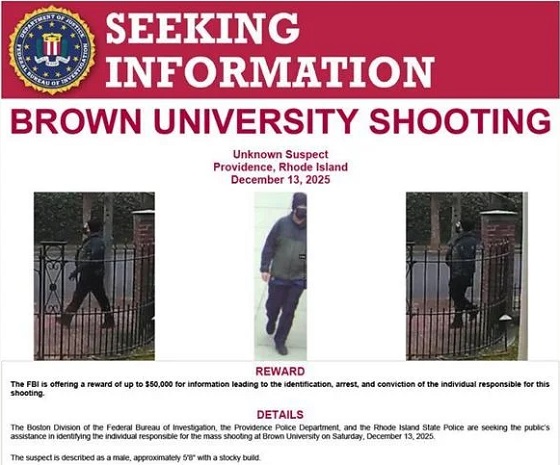
From The Center Square
By
Rhode Island officials said the suspected gunman in the Brown University mass shooting has been found dead of an apparent self-inflicted gunshot wound, more than 50 miles away in a storage facility in southern New Hampshire.
The shooter was identified as Claudio Manuel Neves-Valente, a 48-year-old Brown student and Portuguese national. Neves-Valente was found dead with a satchel containing two firearms inside in the storage facility, authorities said.
“He took his own life tonight,” Providence police chief Oscar Perez said at a press conference, noting that local, state and federal law officials spent days poring over video evidence, license plate data and hundreds of investigative tips in pursuit of the suspect.
Perez credited cooperation between federal state and local law enforcement officials, as well as the Providence community, which he said provided the video evidence needed to help authorities crack the case.
“The community stepped up,” he said. “It was all about groundwork, public assistance, interviews with individuals, and good old fashioned policing.”
Rhode Island Attorney General Peter Neronha said the “person of interest” identified by private videos contacted authorities on Wednesday and provided information that led to his whereabouts.
“He blew the case right open, blew it open,” Neronha said. “That person led us to the car, which led us to the name, which led us to the photograph of that individual.”
“And that’s how these cases sometimes go,” he said. “You can feel like you’re not making a lot of progress. You can feel like you’re chasing leaves and they don’t work out. But the team keeps going.”
The discovery of the suspect’s body caps an intense six-day manhunt spanning several New England states, which put communities from Providence to southern New Hampshire on edge.
“We got him,” FBI special agent in charge for Boston Ted Docks said at Thursday night’s briefing. “Even though the suspect was found dead tonight our work is not done. There are many questions that need to be answered.”
He said the FBI deployed around 500 agents to assist local authorities in the investigation, in addition to offering a $50,000 reward. He says that officials are still looking into the suspect’s motive.
Two students were killed and nine others were injured in the Brown University shooting Saturday, which happened when an undetected gunman entered the Barus and Holley building on campus, where students were taking exams before the holiday break. Providence authorities briefly detained a person in the shooting earlier in the week, but then released them.
Investigators said they are also examining the possibility that the Brown case is connected to the killing of a Massachusetts Institute of Technology professor in his hometown.
An unidentified gunman shot MIT professor Nuno Loureiro multiple times inside his home in Brookline, about 50 miles north of Providence, according to authorities. He died at a local hospital on Tuesday.
Leah Foley, U.S. attorney for Massachusetts, was expected to hold a news briefing late Thursday night to discuss the connection with the MIT shooting.
Crime
Bondi Beach Survivor Says Cops Prevented Her From Fighting Back Against Terrorists


From the Daily Caller News Foundation
A woman who survived the Hanukkah terrorist attack at Bondi Beach in Australia said on Monday that police officers seemed less concerned about stopping the attack than they were about keeping her from fighting back.
A father and son of Pakistani descent opened fire on a Hanukkah celebration Sunday, killing at least 15 people and wounding 40, with one being slain on the scene by police and the other wounded and taken into custody. Vanessa Miller told Erin Molan about being separated from her three-year-old daughter during Monday’s episode of the “Erin Molan Show.”
“I tried to grab one of their guns,” Miller said. “Another one grabbed me and said ‘no.’ These men, these police officers, they know who I am. I hope they are hearing this. You are weak. You could have saved so many more people’s lives. They were just standing there, listening and watching this all happen, holding me back.”
Dear Readers:
As a nonprofit, we are dependent on the generosity of our readers.
Please consider making a small donation of any amount here.
Thank you!
WATCH:
“Two police officers,” Miller continued. “Where were the others? Not there. Nobody was there.”
New South Wales Minister of Police Yasmin Catley did not immediately respond to a request for comment from the Daily Caller News Foundation about Miller’s comments.
Australian Prime Minister Anthony Albanese vowed to enact further restrictions on guns in response to the attack at Bondi Beach, according to the Associated Press. The new restrictions would include a limit on how many firearms a person could own, more review of gun licenses, limiting the licenses to Australian citizens and “additional use of criminal intelligence” to determine if a license to own a firearm should be granted.
Sajid Akram, 50, and Naveed Akram, 24, reportedly went to the Philippines, where they received training prior to carrying out the Sunday attack, according to the Australian Broadcasting Corporation. Naveed Akram’s vehicle reportedly had homemade ISIS flags inside it.
Australia passed legislation that required owners of semi-automatic firearms and certain pump-action firearms to surrender them in a mandatory “buyback” following a 1996 mass shooting in Port Arthur, Tasmania, that killed 35 people and wounded 23 others. Despite the legislation, one of the gunmen who carried out the attack appeared to use a pump-action shotgun with an extended magazine.
-

 International2 days ago
International2 days agoCommunist China arrests hundreds of Christians just days before Christmas
-

 International2 days ago
International2 days agoGeorgia county admits illegally certifying 315k ballots in 2020 presidential election
-

 Business2 days ago
Business2 days agoSome Of The Wackiest Things Featured In Rand Paul’s New Report Alleging $1,639,135,969,608 In Gov’t Waste
-

 Energy2 days ago
Energy2 days ago‘The electric story is over’
-

 Alberta1 day ago
Alberta1 day agoOttawa-Alberta agreement may produce oligopoly in the oilsands
-

 Energy1 day ago
Energy1 day agoWestern Canada’s supply chain for Santa Claus
-

 International1 day ago
International1 day ago$2.6 million raised for man who wrestled shotgun from Bondi Beach terrorist
-

 Alberta2 days ago
Alberta2 days agoCalgary’s new city council votes to ban foreign flags at government buildings





